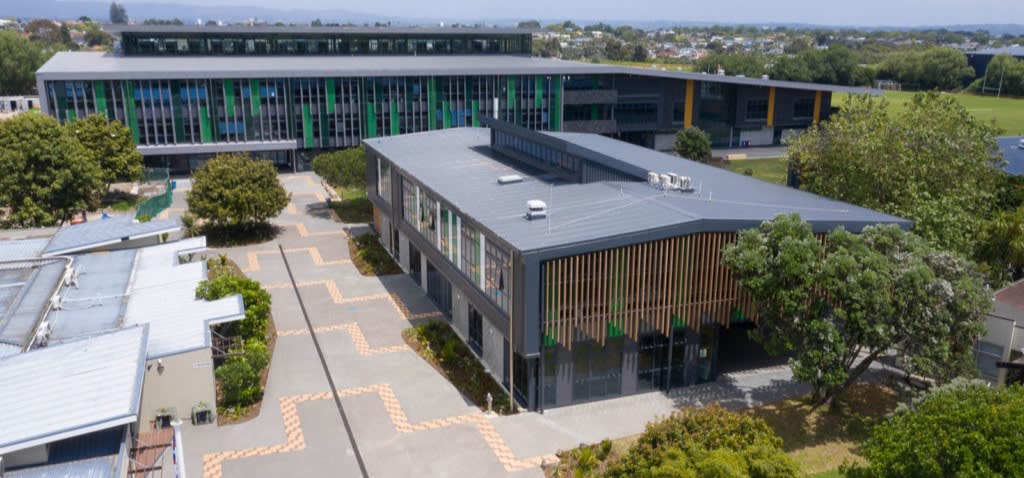Big Rebuild Programme For Old, Substandard Schools ‘Shows Students They Are Valued’
Infrastructure
Education Minister Chris Hipkins today announces a school development project that he forecasts will sustain 3000 construction jobs
Schools who say their children have been shivering in cold, damp classrooms are welcoming the promise of new buildings.
Officials say more than more than 7,500 students up and down the country will benefit from the Education Growth and Redevelopment Programmes, with Education Minister Chris Hipkins to announce details this morning.
Prime Minister Jacinda Ardern told the ReBuilding Nations infrastructure conference: “It’s a large and tangible demonstration of this Government’s commitment to provide new and upgraded classrooms that will obviously benefit students but also provide much needed construction industry jobs.”

Today’s announcement is part of a National Education Growth Plan for 100,000 additional student places in high-growth areas, over the next 10 years. And the Government says it helps develop the country’s construction workforce, tying in with a campaign, announced yesterday, to raise the profile of vocational education and training.
Already, design work is underway at Auckland’s Northcote College, Lower Hutt’s Taita College, Wanaka’s Mt Aspiring College, Twizel Area School, and Spotswood College in Taranaki. Much of the work is to respond to roll growth, and to replace classrooms in poor condition.
At the 1700-pupil Western Springs College, Downer Group has just finished a big, award-winning rebuild of about 90 percent of the buildings – and the school says the $80m Ngā Puna O Waiōrea project has made an enormous difference.
The school’s learning spaces are now arranged around a multi-storey atrium and feature meeting rooms, criss-crossing stairs and, most crucially, teaching teams configured in whatever way is needed to meet the ever-changing requirements of the cohort of students.
There have been problems along the way – a few months ago they tracked down a short flashing that was causing leaks, and pools of water in the new gym at the Auckland school. But that was identified and fixed in the defects period.
“Kids actually seem to be better behaved in the new classrooms – I think it sends a message to the students and teachers that they are valued.”
– Carol Gunn
Board of trustees chair Carol Gunn said the old buildings hadn’t been fit for purpose; the new buildings were encouraging a marked improvement in pupils’ behaviour and learning.
“We’ve always had a strong reputation for teaching, but we previously had 1950s-style barracks that put people off coming here,” she said.
“These new buildings make a lot of difference to the teachers and the students. I heard some kids talk about how they used to freeze in the old classrooms. And the acoustics were awful.
“Kids actually seem to be better behaved in the new classrooms – I think it sends a message to the students and teachers that they are valued.”

“Projects like these are hugely important because so many schools have been run down. I think the reason so many schools need work is there was a period when the Ministry of Education looked only at the build price as the cost of the building – not ongoing costs. And we were the victim of that because we were build on a landfill site.”
Now, she said, the Ministry looked at the cost of total ownership and ran an asset management process.
“Our experience dealing with Downers was fairly impressive. They were quite proactive, they spotted things in the design that they felt would have long-reaching ramifications for the way we maintained the building, we had a positive relationship.”
Yesterday at Mulcahy Engineering and Fabrication in Auckland, Ardern and Hipkins announced a campaign to raise the profile of vocational education and training.
The number of New Zealanders taking up apprenticeships has increased nearly 50 percent, and the number of female apprentices has more than doubled. The marketing campaign begins with social media influencer activity targeted at school leavers and learners under the age of 25, and radio announcer adlibs aimed at starting meaningful conversations about vocational education and training in the community, Hipkins said.
Next month that will expand to TV, radio and social media ads, digital displays and online videos.
“Vocational education and training plays a key role in New Zealand’s recovery from Covid-19,” Hipkins said. “We know that many New Zealanders will be looking to retrain, and employers in key sectors will need more skilled people.”
The $380 million Apprenticeship Boost fund would support employers to retain and take on new apprentices, he said, to help ensure New Zealand has a pipeline of skilled workers, and to avoid shortages in the future. “We know employers in key industries will need more skilled people,” he added. “That’s why we have targeted our free trades training towards industries where demand is expected to grow.”


